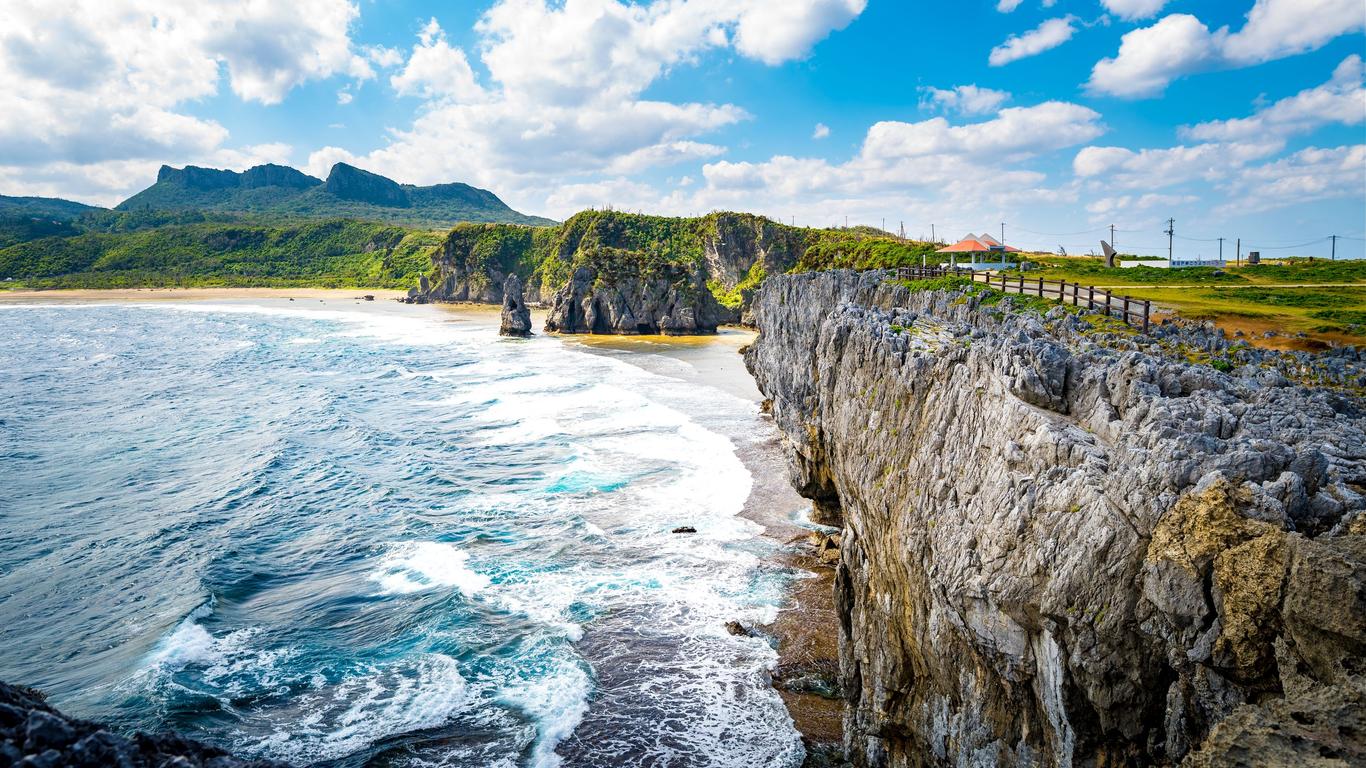Encompassing a chain of islands south-west of Kyushu, Okinawa is a tropical prefecture between Japan and Taiwan whose name translates as “rope in the open sea”. The archipelago was once a prosperous trading nation for the Ryūkyū Kingdom, which ruled the area between 1429 and 1879.
Things to do in Okinawa Prefecture
With its unique cultural heritage and tropical riches, Okinawa Prefecture is one of Japan’s most popular holiday destinations.
Visit Shurijo Castle. Once serving as a palace for the Ryūkyū Kingdom, Shurijo Castle was reconstructed in the 1990s after being destroyed during World War II. It is protected as a UNESCO World Heritage Site and offers magnificent views across Naha from its hilltop location. Step through the Shureimon Gate to admire the lavishly decorated Seiden where royal treasures are on display.
Get up close to marine life at the Churaumi Aquarium. Forming part of Ocean Expo Park, the Churaumi Aquarium is the largest aquarium in Japan. Whale sharks, manta rays and tropical fish can be observed in the Kuroshio Sea tank while reef-building corals are showcased in the Coral Sea exhibit. West Indian manatees, sea turtles and bottlenose dolphins also call the aquarium “home”.
Explore the Okinawa Peace Memorial Park. Created to honour the victims of the Battle of Okinawa, this contemplative park is dotted with monuments and memorials. You can learn more about the conflict at the Peace Memorial Museum before paying your respects to those who lost their lives at the semicircular Cornerstone of Peace.
Snorkel and dive in Keramashoto National Park. Encompassing more than 30 islets, Keramashoto National Park is home to idyllic beaches and dramatic sea cliffs blanketed in tropical vegetation. It’s a popular destination for snorkelling and scuba diving and is frequented by migratory humpback whales between December and April each year.
Getting around Okinawa Prefecture
Naha Airport is the main aviation gateway to Okinawa Prefecture and has flights to destinations across Asia. Domestic flights and ferries connect the islands while buses travel between towns and cities throughout the archipelago. Rental cars are readily available for getting around.





